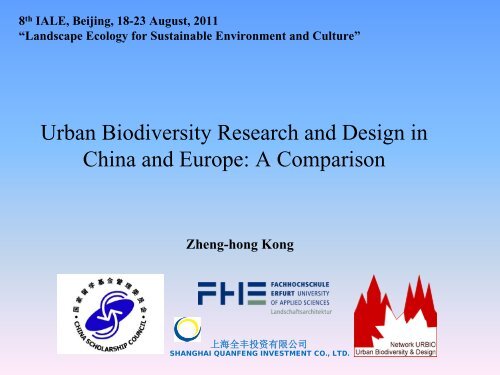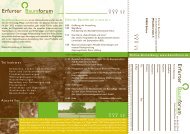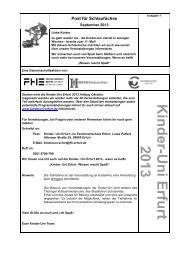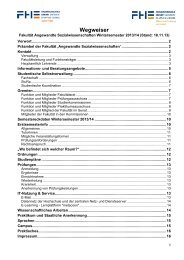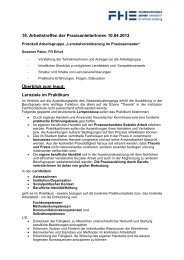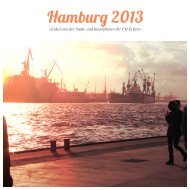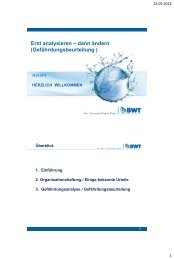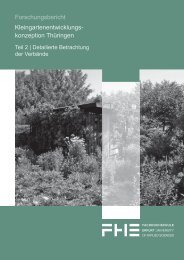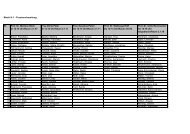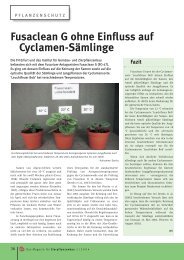Zheng-hong Kong (China) – Urban Biodiversity Research and
Zheng-hong Kong (China) – Urban Biodiversity Research and
Zheng-hong Kong (China) – Urban Biodiversity Research and
Create successful ePaper yourself
Turn your PDF publications into a flip-book with our unique Google optimized e-Paper software.
8 th IALE, Beijing, 18-23 August, 2011<br />
“L<strong>and</strong>scape Ecology for Sustainable Environment <strong>and</strong> Culture”<br />
<strong>Urban</strong> <strong>Biodiversity</strong> <strong>Research</strong> <strong>and</strong> Design in<br />
<strong>China</strong> <strong>and</strong> Europe: A Comparison<br />
<strong>Zheng</strong>-<strong>hong</strong> <strong>Kong</strong><br />
上海全丰投资有限公司<br />
SHANGHAI QUANFENG INVESTMENT CO., LTD.
1.Introduction<br />
Content<br />
1.1 Concepts of <strong>Urban</strong> <strong>Biodiversity</strong><br />
1.2 <strong>Urban</strong>ization <strong>and</strong> <strong>Biodiversity</strong><br />
1.3 <strong>Biodiversity</strong> in Cities<br />
2.<strong>Urban</strong> <strong>Biodiversity</strong> <strong>Research</strong> <strong>and</strong> Design in <strong>China</strong> <strong>and</strong> Europe<br />
2.1 Characteristics of <strong>Urban</strong> <strong>Biodiversity</strong> <strong>Research</strong> <strong>and</strong> Design in <strong>China</strong><br />
2.2 <strong>Urban</strong> <strong>Biodiversity</strong> <strong>Research</strong> <strong>and</strong> Design in Europe<br />
2.3 Comparison: Differences under Common Goals<br />
3. Trends, Chances <strong>and</strong> Challenges<br />
3.1 Trends<br />
3.2 Chances<br />
3.3 Challenges
1.Introduction<br />
1.1 Concepts of <strong>Urban</strong> <strong>Biodiversity</strong><br />
Müller (2010): <strong>Urban</strong> biodiversity is the variety <strong>and</strong> richness of living organisms, including<br />
genetic, species <strong>and</strong> habitat diversity found in <strong>and</strong> on the edge of cities.<br />
Old brownfield, Schöneberber Südgelände / Berlin<br />
(from: N.Mueller)<br />
Small squirrel around Bratislava © REC Slovakia
1.2 <strong>Urban</strong>ization <strong>and</strong> <strong>Biodiversity</strong><br />
1.2.1 <strong>Urban</strong>ization in <strong>China</strong> <strong>and</strong> Europe<br />
Top 10 Largest <strong>Urban</strong> Agglomerations in 1975, 2000, <strong>and</strong> 2025<br />
Source: United Nations, World <strong>Urban</strong>ization Prospects, The 2007 Revision
1.2.1 <strong>Urban</strong>ization in <strong>China</strong> <strong>and</strong> Europe<br />
Percentage<br />
90<br />
80<br />
70<br />
60<br />
50<br />
40<br />
30<br />
20<br />
10<br />
0<br />
1950<br />
1960<br />
1970<br />
1980<br />
1990<br />
2000<br />
Year<br />
Percentage <strong>Urban</strong> ( 1950-2050)<br />
2010<br />
2020<br />
2030<br />
2040<br />
2050<br />
6<br />
5<br />
4<br />
3<br />
2<br />
1<br />
0<br />
-1<br />
<strong>China</strong><br />
Europe<br />
Germany<br />
Source: United Nations, World <strong>Urban</strong>ization Prospects, The 2007 Revision<br />
Area/Pop Density: km2/ /km2<br />
Germany: 357,021 ; 229 ;<br />
Europe(50): 10,180,000; 70;<br />
<strong>China</strong>: 9,640,821; 139.6<br />
<strong>Urban</strong> Annual Growth Rate(1950-2050)<br />
1950-1955 1965-1970 1980-1985 1995-2000 2010-2015 2025-2030 2040-2045<br />
<strong>China</strong><br />
Europe<br />
Germany
1.2 <strong>Urban</strong>ization <strong>and</strong> <strong>Biodiversity</strong><br />
1.2.2 Impacts of <strong>Urban</strong>ization on <strong>Biodiversity</strong><br />
�<strong>Biodiversity</strong> Loss<br />
�Biological Homogenization<br />
Beijing, Source: www.indiatalkies.com/2011/03<br />
“If we do not learn to build, exp<strong>and</strong><br />
<strong>and</strong> design our cities with a respect<br />
for nature, we will have no nature<br />
left anywhere.” --Peter Kareivab<br />
Vancouver (Credit: iStockphoto/Dan Barnes)
1.2.2 Impacts of <strong>Urban</strong>ization on <strong>Biodiversity</strong><br />
Global <strong>Biodiversity</strong> Hotspots
1.2.2 Impacts of <strong>Urban</strong>ization on <strong>Biodiversity</strong><br />
Vascular Plant Hotspots & Megacities<br />
Source: http://www.worldatlas.com/citypops.htm altered Kümmerling 2011
1.2.3 <strong>Biodiversity</strong> Characteristics in <strong>China</strong> <strong>and</strong> Europe<br />
<strong>Biodiversity</strong> in <strong>China</strong><br />
�<br />
�<br />
�<br />
�<br />
600 ecosystem types<br />
more than 1/10 of the total number of<br />
species in the world<br />
10 thous<strong>and</strong>s species of vascular plants<br />
many ecosystem types in Subtropics <strong>and</strong><br />
Qinghai-Xizang Plateau are the unique one<br />
of its kind in the world. ….<br />
Temperate forest ©<br />
Wang Xiaodong<br />
<strong>Biodiversity</strong> in Europe<br />
�<br />
�<br />
Ass in Qinghai-Xizhang Plateau<br />
© Wang Xiaodong<br />
Europe is a continent of breathtaking<br />
natural beauty <strong>and</strong> dramatic contrasts.<br />
Its natural heritage includes several<br />
thous<strong>and</strong> types of habitat, 520 species of<br />
bird, 10 000 plant species <strong>and</strong> at least 100<br />
000 species of invertebrate.<br />
Mountains in Europe (<strong>Kong</strong> 2010)
1.3 <strong>Biodiversity</strong> in Cities<br />
•Native species<br />
Declining<br />
Apophyte<br />
In Berlin Calamagrostis<br />
epigejos, Poa palustris<br />
<strong>and</strong> Hypericum<br />
perforatum are not only<br />
frequent on their original<br />
habitats but invade<br />
strongly changed sites.<br />
Poa palustris, from Wikipedia<br />
Hypericum perforatum, from Wikipedia<br />
Calamagrostis epigejos, from Wikipedia
1.3 <strong>Biodiversity</strong> in Cities<br />
Non-native species have a high proportion in cities due to introduction, immigration <strong>and</strong><br />
naturalization.<br />
neophytes & anecophytes<br />
Robinia pseudoacacia,<br />
once planted as an<br />
ornamental, now common<br />
in wastel<strong>and</strong><br />
Ailanthus altissima<br />
now invasive species in<br />
the Northern<br />
Hemisphere<br />
Robinia pseudoacacia, from Wikipedia Ailanthus altissima , from Wikipedia
1.3 <strong>Biodiversity</strong> in Cities<br />
non-native species<br />
Eichhirnia crasslpes were introduced to<br />
<strong>China</strong> to help purify water body in cities<br />
in 1950s. It soon became invasive <strong>and</strong><br />
difficult to get rid of.<br />
Human population growth <strong>and</strong><br />
naturalized plants in Berlin (Sukopp<br />
& Wurzel 2003)<br />
Ref.: e. g. Fine & Christoforides 1991, Kowarik 2003, Sukopp&Wurzel 2003
1.3 <strong>Biodiversity</strong> in Cities<br />
non-native species<br />
The pigeon<br />
(Columba livea), a<br />
typical bird of<br />
rocks <strong>and</strong> cliffs,<br />
meanwhile the<br />
most common bird<br />
in cities .<br />
(Fig. from www.puzzles-<br />
games.eu)<br />
Ref.: e. g. Kowarik & Starfinger 2002, McKinney 2002
1.3 <strong>Biodiversity</strong> in Cities<br />
New taxa are appearing in urban areas<br />
adapted to the special ecological conditions in urban habitats<br />
New interactions (biocenoses) develop between animals <strong>and</strong> plants<br />
House sparrow<br />
Oenothera ssp.<br />
Ref.: e. g. Mueller 2010, Johnston & Sel<strong>and</strong>er 1964, Wittig 2004, Keil & Loos 2005<br />
Aster ssp.
1.3 <strong>Biodiversity</strong> in Cities<br />
<strong>Urban</strong>ization creates new habitats e.g. residential areas <strong>and</strong> gardens, parks, railway<br />
areas, brown fields……………..<br />
Residential area in Rotternburg<br />
Old brownfield, Schöneberger Südgelände / Berlin
2.<strong>Urban</strong> <strong>Biodiversity</strong> <strong>Research</strong> <strong>and</strong> Design in <strong>China</strong> <strong>and</strong> Europe<br />
2.1 Characteristics of <strong>Urban</strong> <strong>Biodiversity</strong> <strong>Research</strong> <strong>and</strong> Design in <strong>China</strong><br />
2.1.1 Introducing nature into cities has been traditional culture in urban design <strong>and</strong> development.<br />
Classical Chinese Gardening (CCG) , also known as L<strong>and</strong>scape <strong>and</strong> Gardening has<br />
developed from <strong>and</strong> with evolution of Chinese cities. One of its core principles is to<br />
resemble natural l<strong>and</strong>scapes in cities.<br />
Yi-He-Yuan in Beijing, once the former emperors’<br />
garden, first built in 1750.<br />
Qiu-Xia-Pu in Shanghai, once a private garden, first<br />
built in 1506.
2.1.1 Introducing nature into cities has been traditional culture in urban design<br />
<strong>and</strong> development.<br />
Traditionally, some<br />
people also planted trees<br />
or a st<strong>and</strong> around their<br />
houses to create or keep<br />
a good Feng-Shui for<br />
the houses.<br />
Traditional residence in Beijing<br />
(up: inside bottom: overview)<br />
Source: www.beijingtourist.com
2.1.1 Introducing nature into cities has been traditional culture in urban design<br />
<strong>and</strong> development.<br />
Old Parks vs. New Parks<br />
Changfeng Park, Shanghai (<strong>Kong</strong>, 2006) Century Park, Shanghai (up :down) (<strong>Kong</strong>, 2007)
2.1.2 <strong>Urban</strong> biodiversity has been generally integrated in regional investigations.<br />
Cultivated plants in cities have been better documented.<br />
National <strong>and</strong> International<br />
Conferences on Horticultural<br />
Plants in Cities<br />
Publications about<br />
Horticultural plants in Cities
2.1.3 Trees <strong>and</strong> urban forests have been frequently studied.<br />
<strong>Urban</strong> forest in Shanghai<br />
Journal of Chinese <strong>Urban</strong> Forestry
2.1.4 <strong>Urban</strong> green space at the city level has been main object of assessment<br />
<strong>and</strong> design.<br />
Spatial pattern, such as patch<br />
number, patch size, connectivity<br />
are important indicators of<br />
successful design.<br />
City Green Space Planning <strong>and</strong> Design of<br />
Xiang-jiang city, Jiang-su Province, <strong>China</strong><br />
www. Jiangsu.gov.cn
2.1.5 In <strong>China</strong>, city as a subject for ecological research initiated in 1970s,<br />
established in 1980s <strong>and</strong> influenced by thoughts from Anglo-American<br />
regions <strong>and</strong> European areas.<br />
In the summer of 1988, a<br />
group of ecologists from the<br />
Federal Republic Germany,<br />
Led by Professor H.Sokupp ,<br />
came to <strong>China</strong>.<br />
Professor H.Sukopp, the father of <strong>Urban</strong> Ecology<br />
Ref. Chen Chang-du. 1989. Song Yong-chang etc. 2006.
2.2 <strong>Urban</strong> <strong>Biodiversity</strong> <strong>Research</strong> <strong>and</strong> Design in Europe<br />
2.2.1 A long tradition of flora <strong>and</strong> fauna investigation in urban areas.<br />
Particular biotopes, such as ruins <strong>and</strong> walls or gardens <strong>and</strong> parks has been studied<br />
for centuries.<br />
Runneburg, Erfurt (<strong>Kong</strong> 2011)<br />
Ref. H.Sukopp.2002.<br />
“Park on der Ilm”, Weimar (Schulze 2008)
2.2.2 Methods <strong>and</strong> Concepts<br />
• A common way to study specific<br />
urban biota <strong>and</strong> their habitats is the<br />
investigation of their history <strong>and</strong> the<br />
comparison along rural-urban<br />
gradients.<br />
• A concerted approach for urban<br />
biodiversity studies have been<br />
reached.<br />
Ref. H.Sukopp.2004.<br />
Erfurt, Germany (<strong>Kong</strong>, 2010)
2.2.2 Methods <strong>and</strong> Concepts<br />
Species level:<br />
• Data on species origin <strong>and</strong> time<br />
of immigration are frequently<br />
used to analyze species list.<br />
• Comparison among cities has<br />
been conducted to analyze the<br />
impact of urbanization.<br />
• Hemeroby concept is used to<br />
measure a species response to<br />
complex human influence.<br />
.<br />
Ref. Müller. 1990; Petr Pysek. 1995. ; H.Sukopp. 2004.
2.2.2 Methods <strong>and</strong> Concepts<br />
Vegetation level:<br />
• Description of vegetation is<br />
almost exclusively with the<br />
phytosociological approach.<br />
• Distribution of communities<br />
with respect to habitat type has<br />
been widely studied.<br />
Ref. Müller. 1990; Petr Pysek. 1995. ; H.Sukopp. 2004.<br />
A green city center-Biotope Area Factor- BAF<br />
http://www.stadtentwicklung.berlin.de/natur_g<br />
ruen/index_en.shtml
2.2.3.Basic Results <strong>and</strong> Conclusions<br />
• Even man-made sites have characteristic combinations of organisms.<br />
• The similarity between former <strong>and</strong> present habitat conditions decreases with time<br />
<strong>and</strong> along a gradient from the periphery to the centre. Parts of cities of different<br />
ages have different plant species <strong>and</strong> communities.<br />
• Changes in urban flora <strong>and</strong> vegetation include the decline of native species <strong>and</strong><br />
the introduction <strong>and</strong> naturalization of non-native plants. Both tendencies have<br />
been accelerated since the middle of 19 th century.<br />
• The majority of alien species that establish in cities have a southern origin.<br />
Ref. Müller. 1990; Petr Pysek. 1995. ; H.Sukopp. 2004.
2.3 Comparison <strong>and</strong> Analysis: Differences under Common Goals<br />
2.3.1 Common goals<br />
• Conserve <strong>and</strong> experience nature in cities.<br />
• Better research, Better design<br />
The Yanz<strong>hong</strong> Green-space ,the largest<br />
public green-space in Shanghai<br />
www.epsh.sh.cn<br />
Facades covered with greenery as an<br />
ecosystem <strong>and</strong> species preservation<br />
measure<br />
http://www.stadtentwicklung.berlin.de/<br />
natur_gruen/index_en.shtml
2.3.2. Different cognitive perspective concerning urban biodiversity<br />
• Europe: nature of the city<br />
• <strong>China</strong>: nature in the city<br />
Course on plants in urban areas in Erfurt,<br />
Germany(<strong>Kong</strong> 2011)<br />
Course on plants in urban area,<br />
Shanghai, <strong>China</strong> (<strong>Kong</strong>, 2005)
2.3.3 Different urbanization levels determine design emphasis.<br />
• Europe: How to conserve current habitats in cities, e.g. biotope mapping<br />
• <strong>China</strong>: How to have more green spaces in cities, e.g. green space<br />
design
2.3.4 <strong>Urban</strong> biodiversity researches in Europe has taken spontaneous species<br />
as main objects. Chinese researchers focus more on cultivated species since<br />
we have a tradition to utilize plants.<br />
Alex<strong>and</strong>er von Humboldt<br />
(1769-1859), Kosmos (1845)<br />
Li Shi-Zhen (1518-1593) ,<br />
Compendium of Materia Medica<br />
also known as Flora sinensis (1593)<br />
Charles Darwin (1809-<br />
1882), On the origin of<br />
Species(1859)
2.3.5 Different study stages determine research emphasis.<br />
• Europe: Where are they from? How do they evolve?<br />
• <strong>China</strong>: Which kind we need? How can they function better?<br />
Prof.Sukopp in<br />
Schöneberger<br />
Südgelände ,<br />
Berlin (<strong>Kong</strong><br />
2010)<br />
Field investigations<br />
for Flora of <strong>China</strong><br />
www.biodiversitychin<br />
a.org
2.3.6 Different concerns about biodiversity in cities.<br />
• Europe: nature conservation, amenity <strong>and</strong> recreation<br />
• <strong>China</strong>: Amelioration of urban microclimate <strong>and</strong><br />
environmental quality, air pollution, noise. etc.<br />
Citizens do morning exercise in the park in Beijing.<br />
Source: www.chinadaily.com.cn<br />
Ref. Jim <strong>and</strong> Chen. 2006. EEA. 2010.<br />
Tree shades are popular in summer days in cities.<br />
Source: www. Touristjs.com.cn
2.3.7 <strong>Urban</strong> biodiversity researches have far more impacts on designs in<br />
Europe than in <strong>China</strong>.<br />
• Europe: urban researchers<br />
have a strong influence on<br />
designers as well as policy<br />
makers.<br />
• <strong>China</strong>: Designers run after<br />
urbanization <strong>and</strong> then followed<br />
by researchers.
3. Trends, Chances <strong>and</strong> Chanllenges<br />
3.1 Trends: Bridging science with policy <strong>–</strong>through projects <strong>and</strong> programmes<br />
Hamburg, Green Capital of<br />
Europe of 2010<br />
Shenzhen, International Garden<br />
City of 2000
3.2 Chances<br />
• Sino-German Workshop on<br />
Ecocities <strong>and</strong> Ecoprovinces:<br />
Full group photo (photo:<br />
Susanne Lehmann, 2010 in<br />
Shenzhen, <strong>China</strong>)<br />
• Excursion guide Röös explains<br />
the forestry office’s strategy for<br />
the Eifel National Park (photo:<br />
Susanne Lehmann, 2009 in<br />
Bonn, Germany)
3.2 Chances<br />
• Germany adopted its<br />
National <strong>Biodiversity</strong><br />
Strategy <strong>and</strong> Action Plan<br />
on 7 November,2007.<br />
• <strong>China</strong> adopted its National<br />
<strong>Biodiversity</strong> Strategy <strong>and</strong><br />
Action Plan in 1994. In 2010,<br />
<strong>China</strong> adopted an updated<br />
National <strong>Biodiversity</strong><br />
Strategy <strong>and</strong> Action Plan for<br />
2011-2030.
3.2 Chances<br />
• <strong>Urban</strong> ecology course has been<br />
opened to undergraduates in<br />
life sciences or geographical<br />
departments in many<br />
universities in <strong>China</strong>.<br />
• <strong>Urban</strong> planning <strong>and</strong> design<br />
course is generally opened in<br />
Architecture or Art<br />
departments.<br />
Buildings of 1950s of Tongji University who<br />
enjoy a high reputation in urban planning<br />
<strong>and</strong> design.<br />
Beijing University, <strong>Urban</strong> Ecology course<br />
was first opened in <strong>China</strong>.
3.3 Challenges<br />
�Linking urban ecology with urban design<br />
�Integration of biodiversity in urban development<br />
� Closer integration of <strong>Urban</strong> biodiversity research <strong>and</strong> design<br />
� Raising greater public awareness of urban biodiversity
Acknowledgement
Thanks for your attention!


